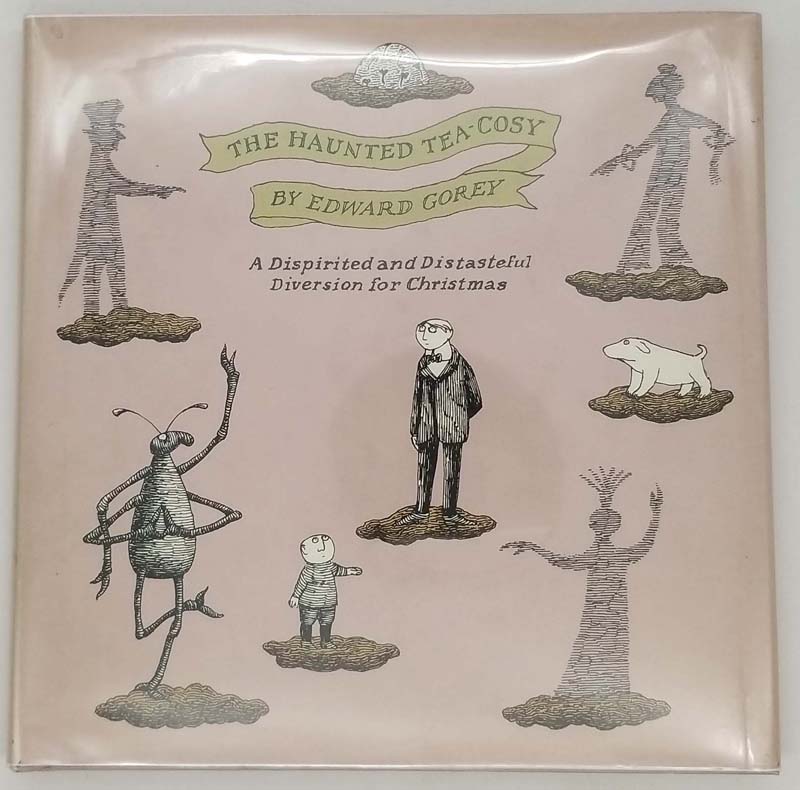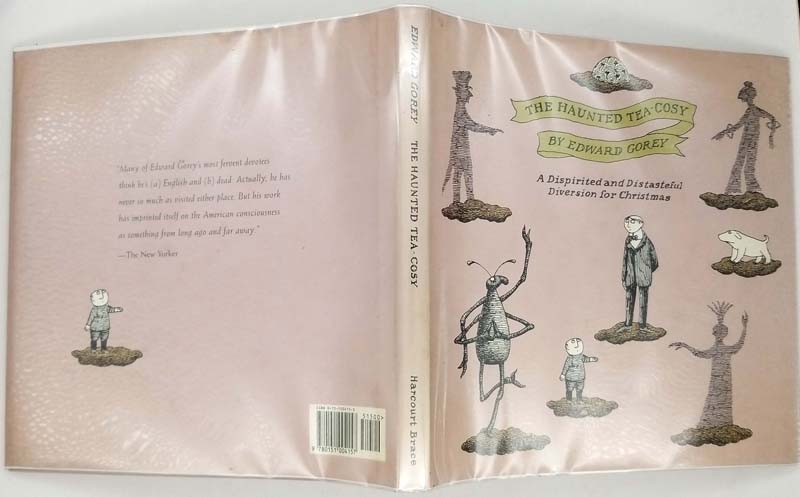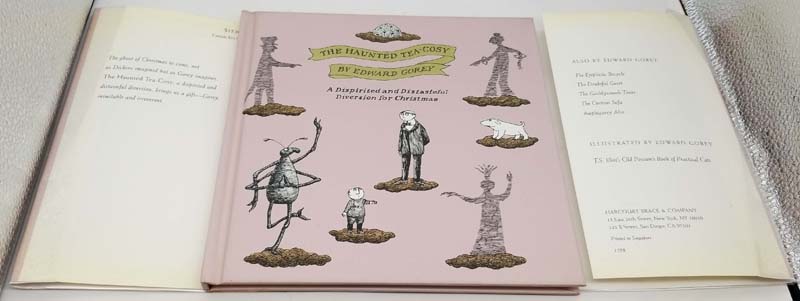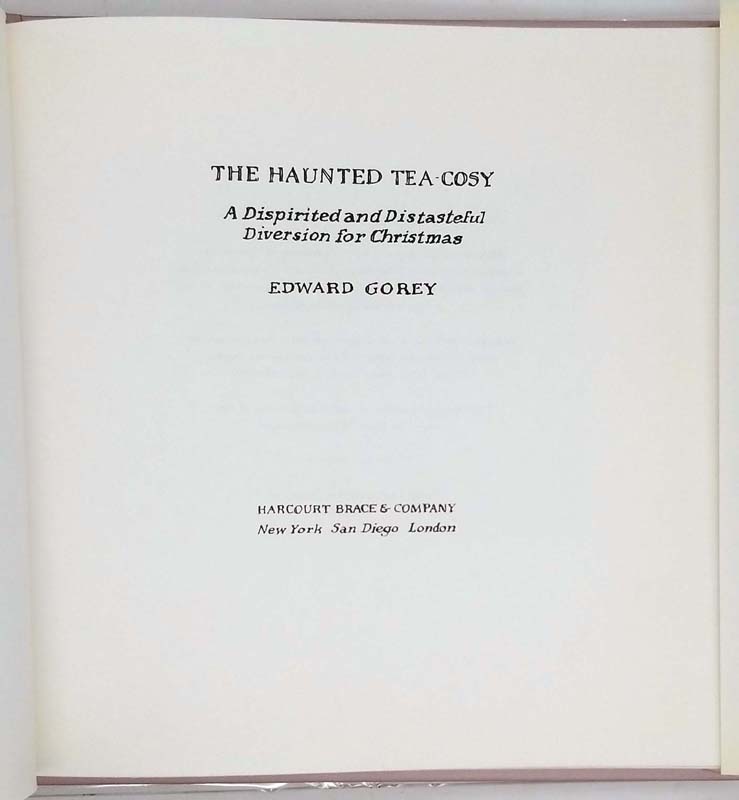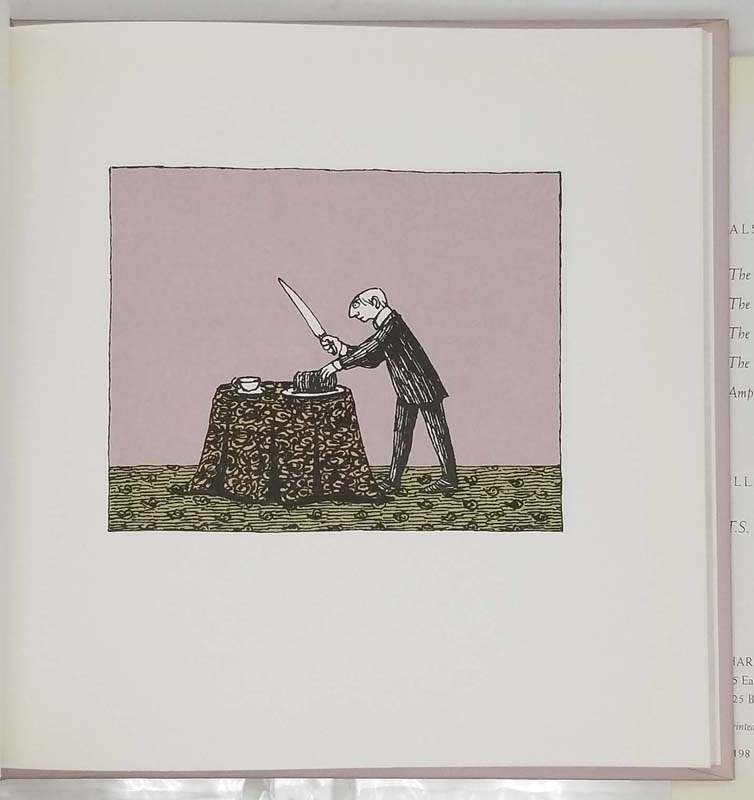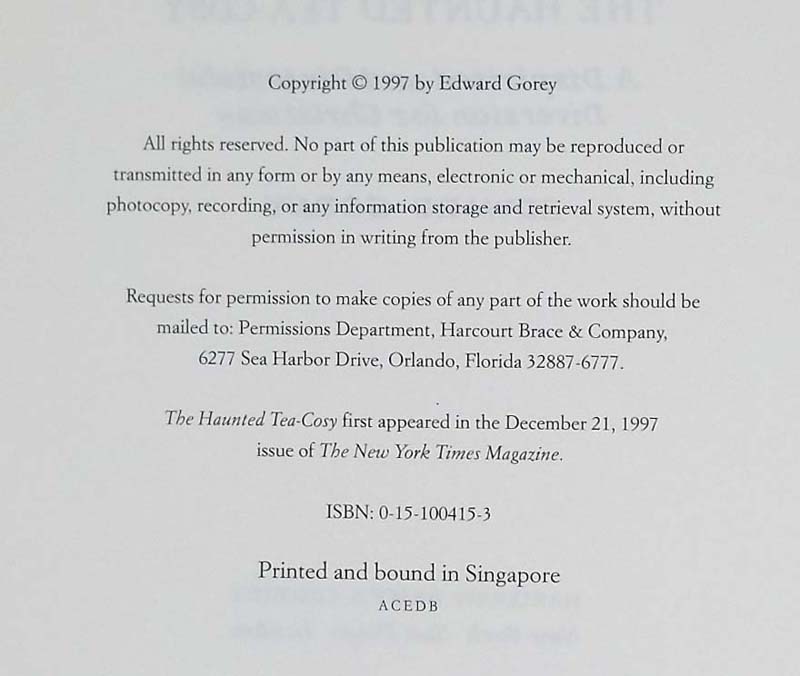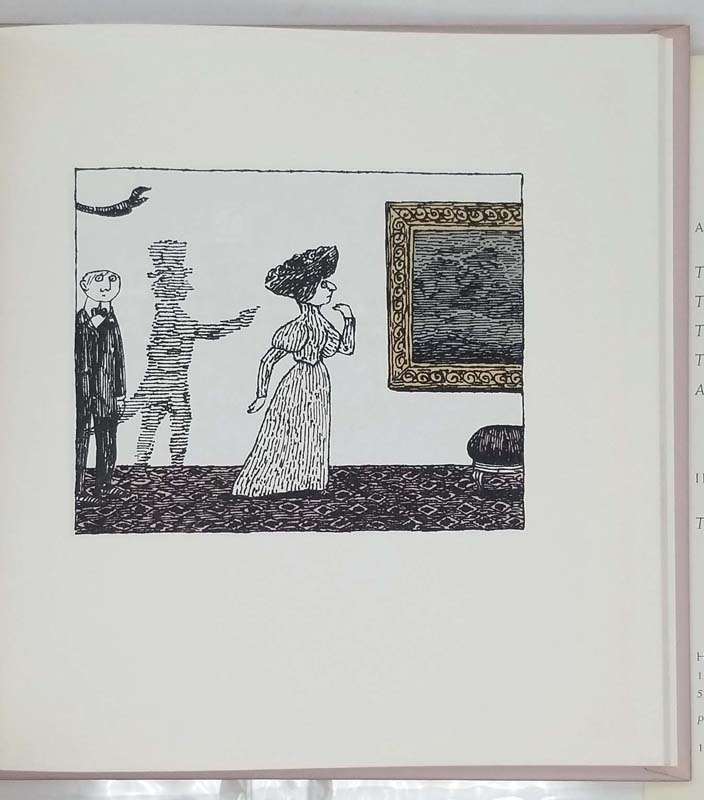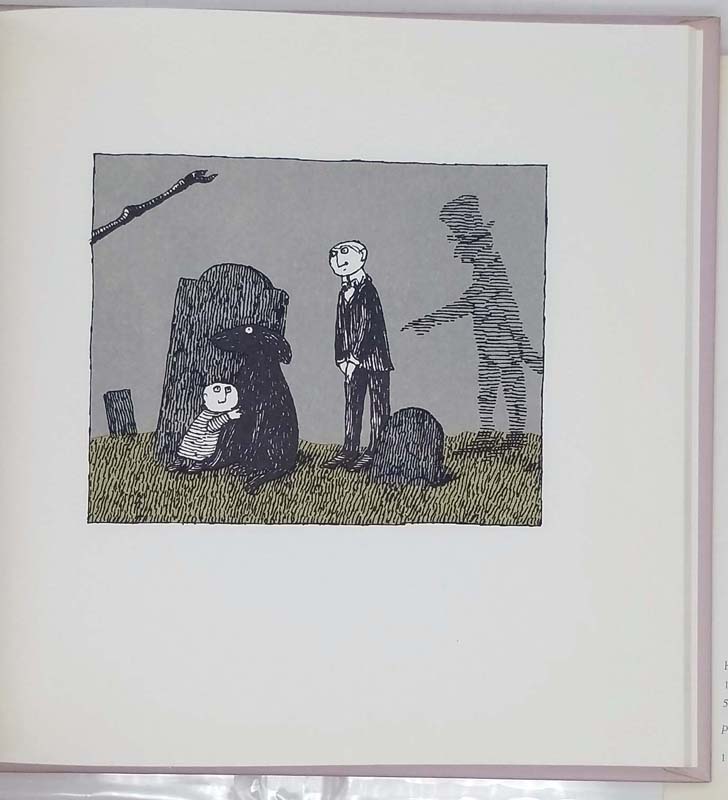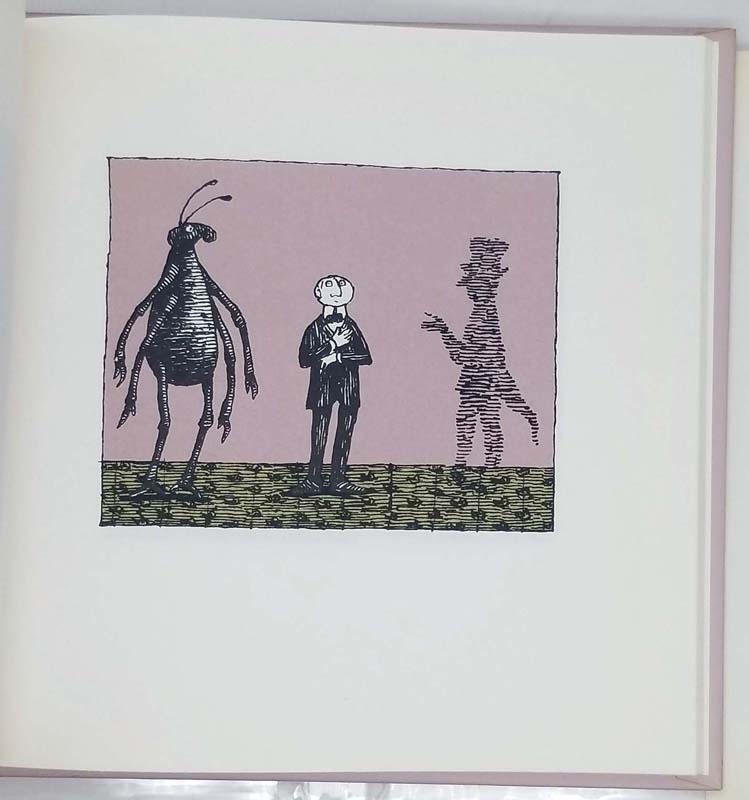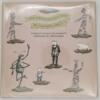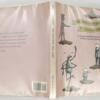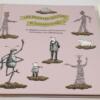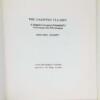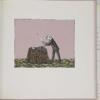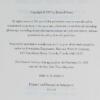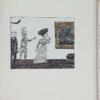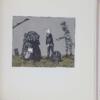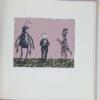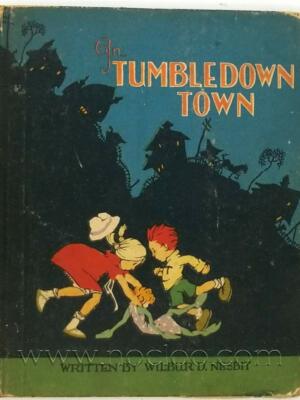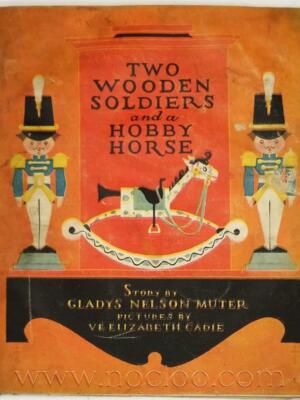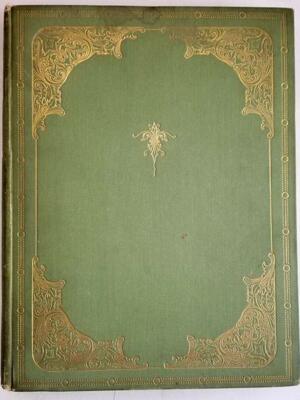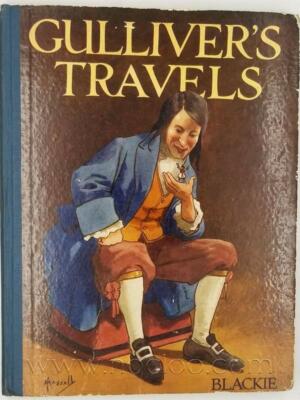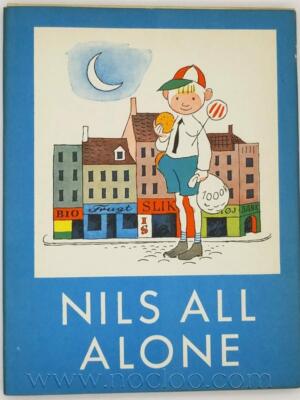The Haunted Tea-Cosy (1997) by Edward Gorey is a deliciously eerie and darkly humorous novella that reimagines Charles Dickens’ A Christmas Carol through Gorey’s signature gothic lens. Presented as a “Christmas Story” for those who find traditional holiday cheer too saccharine, this tale follows the misadventures of a curmudgeonly protagonist visited by a spectral cephalopod—the Bahhum Bug—who serves as his cryptic guide through a series of absurd and unsettling yuletide visions.
Gorey’s meticulous pen-and-ink illustrations, brimming with Victorian gloom and quirky menace, depict scenes like a crumbling manor besieged by giant vegetables, a library haunted by spectral librarians, and a dystopian holiday feast where the pudding is “studded with thimbles.” The narrative, written in mock-archaic prose, drips with Gorey’s trademark wit, undercutting moral lessons with nihilistic asides and surreal detours (e.g., a choir of “disembodied heads singing discordant carols”).
Though framed as a parody of holiday redemption tales, The Haunted Tea-Cosy is ultimately a meditation on futility and the absurdity of human rituals. The protagonist’s “transformation” at the story’s end is hilariously ambiguous—less a change of heart than a resigned shrug to life’s inherent meaninglessness.
The book’s design mimics a vintage Victorian volume, complete with faux-aged paper and ornate endpapers, making it a tactile delight.
“Gorey’s holiday classic is the only Christmas story where the ghosts seem as baffled by existence as the living.” — The New York Review of Books
